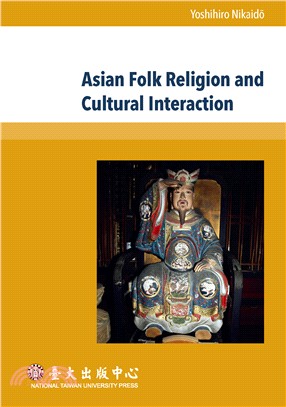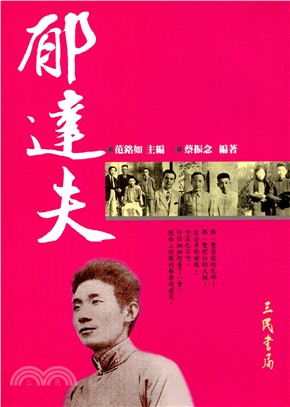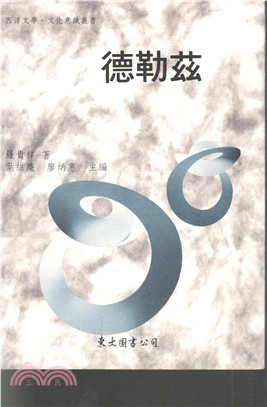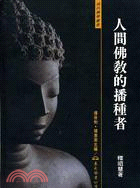Asian Folk Religion and Cultural Interaction
- 系列名:Global East Asia
- ISBN13:9789863501039
- 出版社:臺大出版中心
- 作者:Yoshihiro Nikaidō(二階堂善弘)
- 裝訂/頁數:精裝/230頁
- 規格:24cm*15.5cm*2.2cm (高/寬/厚)
- 出版日:2015/11/09
再享89折,單本省下89元
商品簡介
作者簡介
序
Foreword
This book discusses numerous temples and shrines of Sinitic origin through the methodology of cultural interaction. The subjects of analysis are several Daoist and Buddhist gods, folk gods, and Bodhisattvas, but nearly all are limited to gods that were transmitted and deified outside the Chinese continent, or were introduced from other regions and syncretized.
In the first section, “Cultural Interaction and Sinitic Gods in Japanese Buddhist Temples,” I consider mainly the deities and Bodhisattvas that were introduced to Japan. In Chapter 1 of Section I, “Temple Guardian Gods in the Sino-Japanese Five Mountain System and Cultural Interaction,” I discuss such temple guardian gods as Zhaobao Qilang Dadi and Cishan Zhang Dadi, which arrived in Kamakura-period Japan from Southern Song China, and later came to be deified as part of the Five Mountain system. In contrast to Japan, belief in these gods later waned in China.
Huaguang Dadi (Kakō Taitei), treated in Chapter 2, “Temple Guardian Gods of the Ōbaku School of Zen Buddhism and Cultural Interaction,” arrived in Japan at the beginning of the Edo period together with the Ōbaku School of Zen Buddhism. Statues of these temple guardian gods were later built throughout Japan, but their origin has been forgotten. Belief in Huaguang declined in China during the Qing period.
In Chapter 3, “Cultural Interaction: Myōken Bosatsu and the God Zhenwu,” I analyze how Zhenwu Daodi was transformed from the Daoist deity Xuanwu of antiquity to becoming an object of worship in Japan after syncretizing with Myōken Bosatsu.
In Chapter 4, “Differences and Cultural Interaction between the Japanese and Chinese Bodhisattva Ksitigarbha,” I examine the profoundly different images of Ksitigarbha in China and Japan as well as how the gods are deified. I also discuss Mt. Jiuhua, which is currently the center of Ksitigarbha in modern China.
In Section II, “Travels and Cultural Interaction of the Gods in Asia,” I discuss the process by which Sinitic gods were transmitted to regions outside of the Chinese continent and subsequently became objects of worship in various areas of Asia.
In Chapter 1 of Section II, “Temples and Cultural Interaction in Taiwan and Singapore,” I consider the gods worshipped in the current temples of Taiwan and Singapore as a basis upon which to examine the origins of belief in the Fujian and Guangdong regions. The gods discussed in this chapter include Baosheng Dadi, Kaizhang Shenwang, and Guangze Zunwang.
In Chapter 2 of this section, “Sinitic Gods and Cultural Interaction in Nagasaki and Okinawa,” I analyze still extant Sinitic temples such as Chinese temples in Nagasaki and the Shisei Confucian Temple in Naha, Okinawa.
Other scholars have, of course, also researched these deities; this book could not have been written without their seminal work. The methodology of cultural interaction studies, however, is new and should provide fresh insights into the field. Take, for example, Zhaobao Qilang, covered in Chapter 1, Section I. This god was a popular object of worship from the Song through the Yuan periods in the Zhejiang region, and arrived in Japan during the Kamakura period as part of the Five Mountain culture. Belief in this deity subsequently waned in China, and now there are almost no traces of temples to this god remaining in China. Consequently, there has been no research done on Zhaobao Qilang from the perspectives of Daoism or folk religion. Rather, research has been conducted within the paradigms of Zen Buddhism, art history, or Sino-Japanese intercultural history. Scholarship on Zhaobao Qilang is also found in works on popular Chinese literature. The point here is that research has extended over many fields. I believe that in order to research a deity of this character it is necessary to analyze the subject by using the inclusive approach of cultural interaction studies.
I personally believe that the advantage of cultural interaction studies is that it encompasses pluralistic approaches to scholarship and fieldwork. To use the example of Zhaobao Qilang again, written records are nearly non-existent; all that remains are statues in Japanese Zen Buddhist temples and some remnants in Chinese temples. There are even cases in which the monks themselves do not know the identity of this god. This phenomenon compelled me to visit the temples in question myself to verify the identity of the statues. Fortunately, there was still a statue of Zhaobao Qilang at Ayuwang Temple in Ningbo, China. It had mistakenly been identified as a statue of King Asoka. Thus, one of the most crucial methodologies involved in cultural interaction studies is to match written records with on-site investigations.
I also felt that electronic repositories were essential to my research. As mentioned earlier, cultural interaction studies require research that cuts across various fields, but if there are many divergent fields involved, the amount of documentation naturally becomes overwhelming. It is also quite difficult to search for materials outside of one’s area of expertise. In order to address this problem, it is necessary to process large amounts of data in a short period using available electronic tools. To return again to the example of Zhaobao Qilang, I was able to ascertain through searching Kansai University’s repository, the Database of Chinese Classic Ancient Books (Zhongguo Jiben Gujiku, that there was reference to the deity in an anthology by a Song period literati. Such a discovery would have been impossible without recourse to the database. Of course, problems arise when one uses the search engine without due circumspection.
目次
Foreword
Section I: Cultural Interaction and Sinitic Gods in Japanese Buddhist Temples
Chapter 1: Temple Guardian Gods in the Sino-Japanese Five Mountain Temple System and Cultural Interaction
Chapter 2: Temple Guardian Gods of the Ōbaku School of Zen Buddhism and Cultural Interaction
Chapter 3: Cultural Interaction: Myōken Bosatsu 妙見神 and the God Zhenwu 真武
Chapter 4: Differences and Cultural Interaction between the Japanese and Chinese Bodhisattva Ksitigarbha
Section II: Travels and Cultural Interaction of the Gods in Asia
Chapter 1: Temples and Cultural Interaction in Taiwan and Singapore
Chapter 2: Sinitic Gods and Cultural Interaction in Nagasaki and Okinawa
Conclusion
主題書展
更多主題書展
更多書展本週66折
您曾經瀏覽過的商品
購物須知
為了保護您的權益,「三民網路書店」提供會員七日商品鑑賞期(收到商品為起始日)。
若要辦理退貨,請在商品鑑賞期內寄回,且商品必須是全新狀態與完整包裝(商品、附件、發票、隨貨贈品等)否則恕不接受退貨。

























